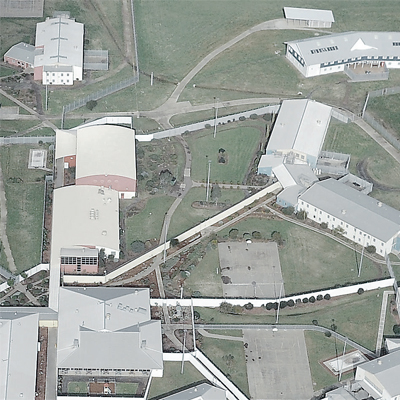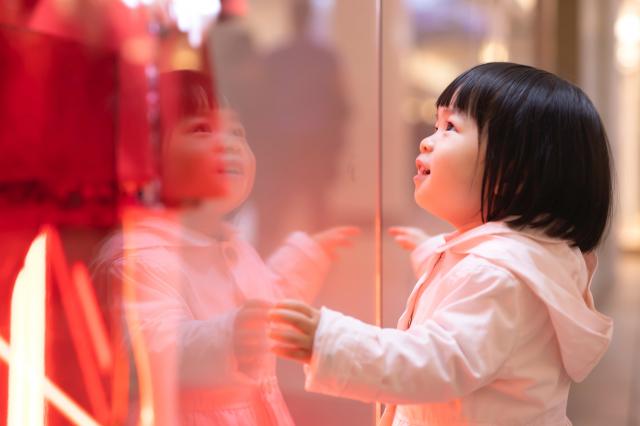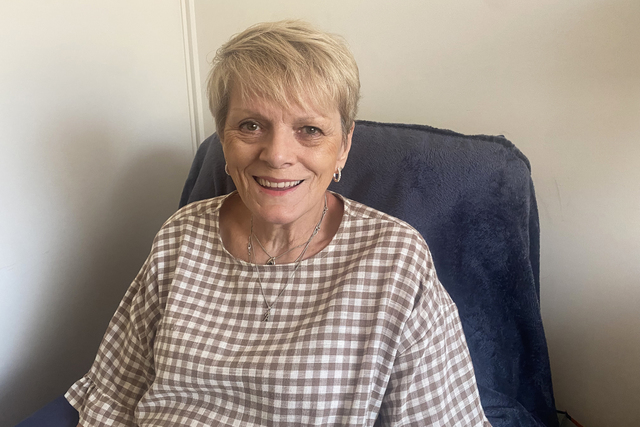Goya Dmytryshchak entered Port Phillip Prison to get a first-hand view of the sad, often desperate lives lived behind bars.
ABOVE one eye is a graze the colour of an unripe tomato, like the immature plants outside his accommodation unit. His clouded eyes swing chaotically, like his unkempt hair, looking like a bad seed grown wild because no one cared to nurture his growth or see him bear fruit.
The injured man is perhaps 20, but only chronologically. He barges into the room gripping a polystyrene cup and demands an Easter egg.
He keeps referring to ‘‘mummy’’.
Eventually, he retreats, apologising for being naughty. All around are men dressed in identical green trackpants and white tees or singlets.
Some have a thousand-yard stare. A few, like the first man, are low functioning on the autism spectrum. Others have an IQ as low as 40, or an acquired brain injury.
All have at least one intellectual disability. Whether it’s a blessing or a curse, some don’t actually know where they are. Welcome to Port Phillip Prison.
Victoria’s maximum security prison near Laverton housed 65 inmates with an intellectual disability at the time of writing.
Corrections Victoria says there are 120 prisoners with an intellectual disability in the state’s prison system. Seventy per cent have been sentenced and 30 per cent are on remand.
Michelle Enbom, co-ordinator inside Port Phillip’s Marlborough Unit for the intellectually disabled, says the prison is struggling to cope.
‘‘We have beds for 33,’’ she says. ‘‘Thirty three specialised beds for the intellectually disabled.
“Our community team – our Corrections Victoria arm – is working very hard to create pathways to other prisons and we just had a meeting this afternoon trying to create some more pathways into minimum security.
“We do have six beds at Loddon [mediumsecurity prison 128 kilometres north-west of Melbourne].
“But we’ve got 135 in the system, and we’ve got about 60 with an intellectual disability waiting for assessment to become registered because their level of function is that low.
“So you can see the nightmare when we’ve got 33 [specialised beds at Port Phillip] and six beds [at Loddon]. That’s all we’ve got in the system for 135 — plus 60 waiting.”
The Marlborough unit was recently awarded for its horticultural program. Food grown by prisoners is donated to the Migrant Hub at Werribee and used to feed refugees and help migrants learn to cook.
Enbom believes some of the inmates would be better off in supported accommodation out in the community – but there’s a dearth of such places for the disabled.
“Part of the issue is, there isn’t the accommodation out in the community to actually look after these guys,” she says.
“We’ve had guys in there who have had that severe cognitive impairment that they’re not understanding of where they are and quite often in here they get their bed, they get three meals a day, they get staff who work with them, they get friends that they make in here.
“Sometimes that’s a much better option than what they’re able to get out in the community where they end up living on the street, with no accommodation, and problems they face in the community.
“You talk to people and say there’s people in prison with an intellectual disability and they go, ‘Oh God, what are people with a disability doing in prison?’ Quite often there’s nowhere else to put them.
‘‘I don’t know how many guys I’ve had in there that have been put there by the courts because there’s no accommodation and they sit there and wait until we can find them accommodation. It’s not an appropriate environment for any of these guys to live in.”
Inside a fluorescent concrete cage, where everyone is guided by endless lines drawn on the floors, the line between criminal and victim is sometimes blurred. Enbom says 99 per cent of the men in her unit are illiterate.
“Also, we’ve got guys with quite significant acquired brain injuries,’’ she says. ‘‘Some get it through birth with hypoxia; people have alcohol syndrome; there’s also traumatic things where they’ve had car accidents, assaults, brain damage in some way.
“A lot of our guys can tell the time – they can tell you it’s five past three, but if you tell them to go to an appointment at five past three, they’ll never ever get to that appointment.
“Most of these guys, at 16 they’re given a disability pension. A lot of them have done 15 or 20 foster homes; a lot of them were in special schools, but special schools also have quite a huge issue around behaviours and how to manage those.”
The unit’s oldest inmate is aged 65.
“One of our guys in there at the moment has quite a full-on disability,’’ says Enbom. ‘‘He’s an older guy and he’s been looked after by his family his whole life, but his parents have died and then another guy took him on as his carer and he passed away so all of a sudden there’s nowhere out in that society.’’
A memorial garden is a reminder of former prisoners who didn’t make it outside. Enbom says some inmates with a disability have to be placed in the mainstream prison population, where they are at risk of being harmed or manipulated.
‘‘You do struggle with it sometimes,’’ she says of her job. ‘‘But you learn to manage it in a way that doesn’t affect your family life and home.
‘‘Some of the stories I see with these guys … you actually have a look at their histories, how they’ve been brought up. It’s horrific.
‘‘I’ve looked at some of their stories and there’s not a hope in hell I would survive if I’d been through that.
‘‘Fifteen, 20 different foster homes through their life. Being brought up in homes where there’s been physical abuse, sexual abuse … horrible horrible stuff.’’
As a measure of the trust the prisoners have earned, Marlborough unit has a garden shed. No big deal you would think, but this is virtually unheard of in a maximum security prison because of security concerns.
The shed is used in the unit’s award-winning horticultural program, which for many prisoners represents the first educational or vocational opportunity they’ve had.
It sets up prisoners with a skill they can use when they leave, and a horticulture certificate 1 and 2 to help them get a job. From the way the prisoners talk about their plants, it’s obvious the program is something they care deeply about.
It’s a source of self-esteem as much as laying down roots for life outside.
“The bottom line is, what we do in here is try not to create any more victims in the community,” Michelle says.
“We now have a team that works in the community as well, and we’ve got an accommodation house that has five beds. Five beds is ridiculous.’’
Anne Hooker, a youth development officer in the Penhyn youth unit, explains that five prisoners are let out every two weeks.
‘‘So in a month, you’d be letting out 20,” Hooker says. Like Enbom, her aim is to have ‘‘no more victims’’.
Hooker says that as a community, we must care what happens inside prison if we want to have ‘‘no more victims’’.
She says that when a prisoner first arrives, his care factor is zero.
‘‘They don’t have what I call the ‘C’ factor,’’ Hooker says. ‘‘That care factor is probably the most important part of youth rehabilitation ever. They don’t care about anybody. They don’t care about themselves. They don’t care about anything. They’ve stopped caring.
‘‘Without that care factor they will not care and that allows them to do horrible and horrific things to innocent people.’’
The Penhyn unit’s award-winning programs include Serving Time, which makes tees bearing the Doin’ Time logo to raise money for charity.
It has attracted worldwide attention and praise from the likes of Sir Richard Branson.
In his book, Screw Business as Usual, Sir Richard writes of his visit to the prison unit: ‘‘I’m blown away. We need to see how we can try and replicate this in the UK and get our businesses to support these social enterprises by employing former offenders.’’
If the young prisoners are a product of their environment, then that environment includes ‘‘us’’, says Hooker .
‘‘The average person out there watches crime shows on television for enjoyment, and likes them.
‘‘The average person out there will go to a football match or a sports match of some description, barrack really hard and cheer when someone gets hurt or someone gets jumped on or someone gets injured and the other players ‘test’ that injury.
‘‘Most people are guilty. When people ask me how come these young people are getting more violent, most of the time I would laugh at that because it’s so blatantly obvious to me that they’re bombarded with violence in some way and then we wonder why they’re getting violent.
‘‘I believe that as a community we’ve lost our way in terms of the violence that is out there. Young people are bombarded with it.’’
All bar three of the 823 men at Port Phillip Prison will one day be released back into the community.







